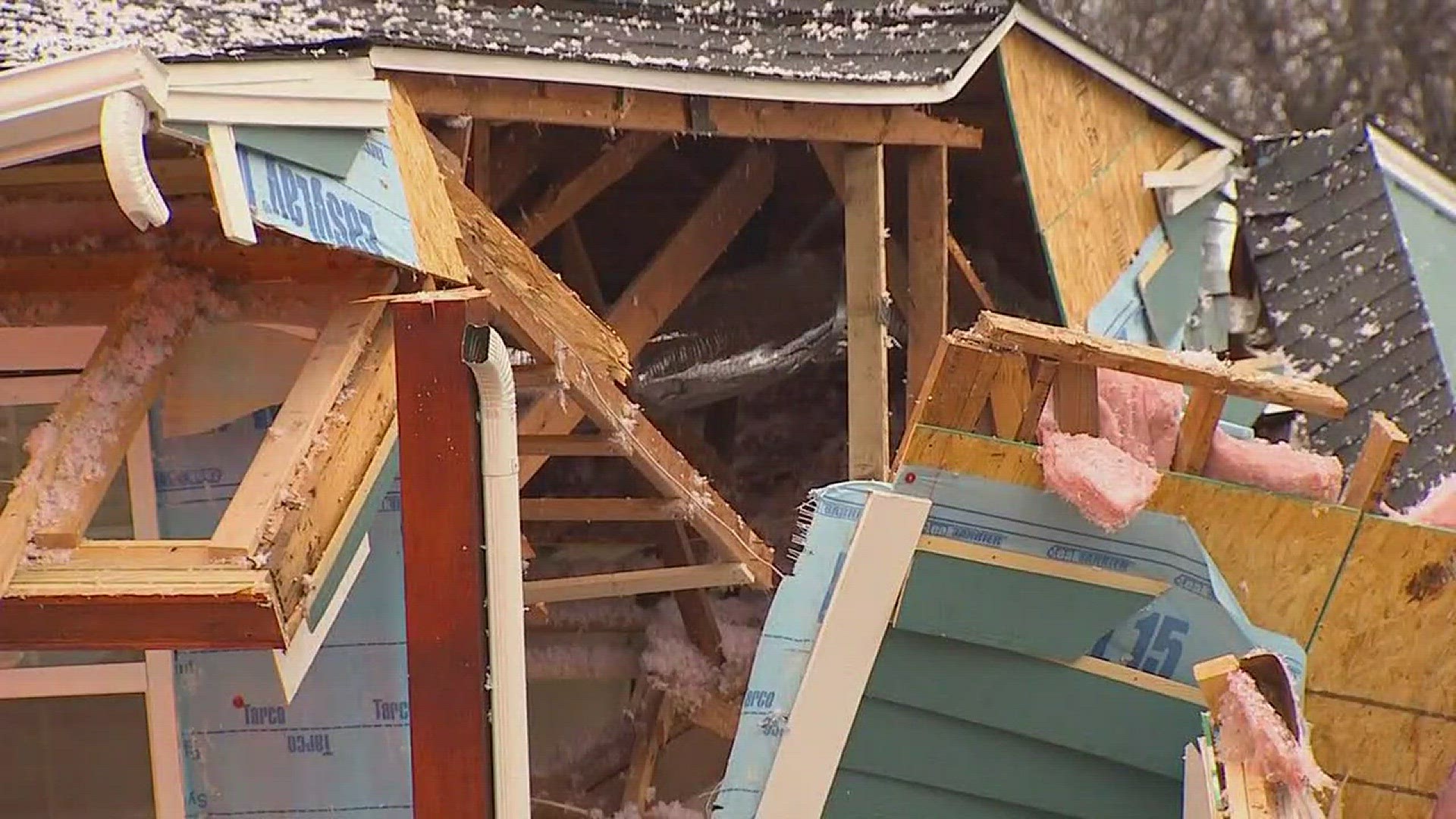DALLAS -- A new report from the National Transportation Safety Board reveals that Atmos Energy was aware of leaks in a Northwest Dallas neighborhood for nearly two months before a house exploded killing a 12-year-old girl and injuring several of her family members.
In a preliminary report issued Friday, the NTSB says it found a crack all the way around a two-inch gas line behind the house on Espanola Drive that exploded last month.
Suspected gas leaks caused another non-fatal house explosion and a fire at two other homes on Feb. 21 and Feb. 22 near Espanola Drive, which is just north of Love Field.
“This casts some doubt into Atmos' claims that this was a weather-related event,” says Brigham McCown, former head of the Pipeline and Hazardous Materials Safety Administration, part of the U.S. Department of Transportation. “Significant rainfall can exacerbate a situation. It can make it easier for leaking gas to find a pathway to the surface but these lines have been leaking for some time.”
Last month, Atmos executives said they were replacing 27 miles of pipe in that section of Dallas because unusually heavy rains had caused significant underground shifting that was causing the leaks. Atmos officials say they have completed more than 80 percent of the project affecting about 2,800 homes.
It could be months, if not a year, before the NTSB’s final report is released.
Federal investigators cautioned that Friday’s findings were preliminary. “No conclusions about probable cause should be drawn from the contents of the preliminary report," the document states.
Don Deaver, a Houston-based pipeline safety expert, reviewed the NTSB’s preliminary report for WFAA. He said the descriptions in that report from the residents in the Feb. 21 and Feb. 22 incidents leads him to believe that there may have been too much pressure in the gas transmission lines leading into the houses.
In the first incident on Feb. 21, the resident told fire investigators that he woke up early in the morning to hear a “popping nose” coming from his heating and cooling system at his house on Durango. When he went into the attic, he saw the HVAC panel cover plate was knocked off and the pilot light was not working. The report says an explosion occurred when he put the cover plate back on the HVAC unit.
The next day, a resident told investigators he was burned when the flames on his stove became “red and out of control.” The flames spread and gutted his home.
Deaver said too much pressure in the transmission line could have caused the crack in the line to get bigger the longer that it went unrepaired.
WFAA has previously reported that Atmos found 28 leaks in the Northwest Dallas neighborhood shortly after the fatal explosion on Espanola. The pipe behind the home failed pressure tests, investigators said. A section of the pipe was shipped to Washington D.C. where the “circumferential crack” was discovered.
Both Deaver and McCown agree that Atmos should have evacuated the neighborhood prior to the fatal explosion. Twelve hours before the Feb. 23 deadly explosion, an Atmos official notified the Texas Railroad Commission, which regulates pipelines, that there had been two house fires in the neighborhood and that they were monitoring the area and looking for potential leaks. Atmos officials noted in the email that they had not evacuated anyone from the neighborhood.
“It frustrates me as a former regulator,” McCown said. “These types of accidents are 100 preventable. It’s better to be safe than sorry. I would rather have a few people inconvenienced for a few hours and then be brought back, than to have a house explode.”
Atmos this week released a map showing that large portions of Dallas have aging cast iron and steel pipes underground. There is still more than 400 miles of cast iron pipe in the city – all of which experts and regulators have said should long ago have been removed. It is not known how many miles of steel pipes remain.
“I don't get the sense that Atmos is in a hurry to get this pipe replacement done and I think Atmos has to have a sense of urgency in getting the older pipe out of the ground,” McCown said.
Where are gas leaks in my neighborhood?
WFAA has mapped leaks in Atmos Energy’s gas lines in the city limits of Dallas from 2013 to 2017. Atmos reports leaks to the Texas Railroad Commission, which regulates the utility. Each leak report lists the type of gas pipe that’s leaking, what caused it to leak and when it was repaired.
It also lists the “leak class,” or “grade” of leak, meaning how serious Atmos defines it. Here’s what those grades mean: A Grade 1 leak represents an existing or probable hazard to persons or property and requires immediate repair or continuous action until the conditions are no longer hazardous. A Grade 2 leak is recognized as being non-hazardous at the time of detection, but justifies scheduled repair based on probable future hazard. A Grade 3 leak is non-hazardous at the time of detection and can be reasonably expected to remain non-hazardous. (Source: Gas Piping Technology Committee’s “Guide for Gas Transmission and Distribution Piping Systems,” published by the American Gas Association)

